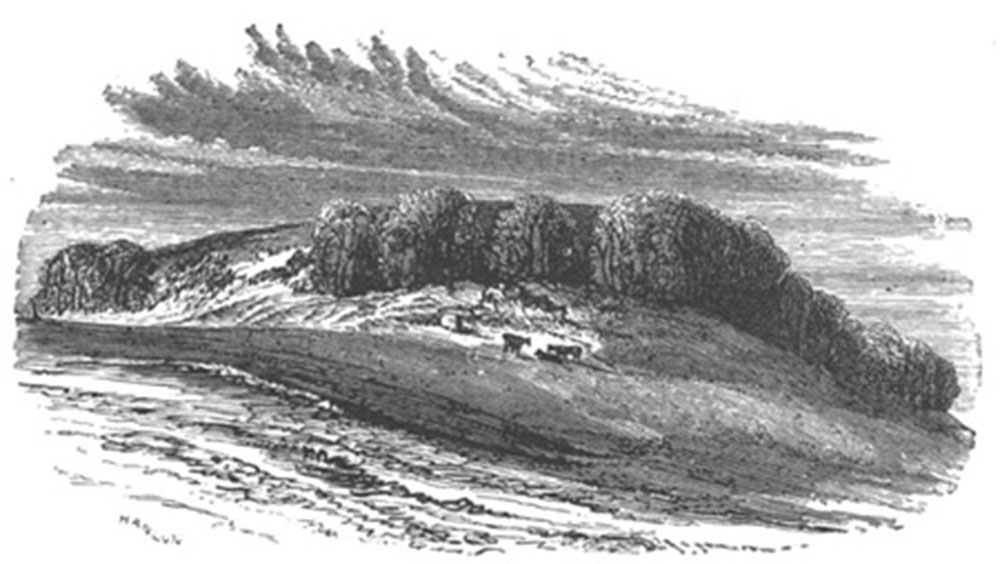Cormac Mac Art - Irish Pictures (1888)
From Irish Pictures Drawn with Pen and Pencil (1888) by Richard Lovett
Chapter III: The Valley of the Boyne … continued
« Previous Page | Start of Chapter | Book Contents | Next Page »
At Oldbridge we are in the midst of modern events and associations, at Mellifont mediaeval, and at Monasterboice in early historic. But the Boyne Valley has links with a far remoter past than the sixth century, the men of a much earlier generation have left us considerable traces of their handiwork. Between Oldbridge and Slane a large number of sepulchral mounds exist, and the references in the Irish MSS. enable scholars to decide that here is situated the great royal cemetery, used by the pagan kings of Ireland away back towards the beginning of the Christian era. Three enormous mounds, lying within a short distance of each other, are so much more prominent than their numerous smaller companions that they naturally for long years past have enjoyed the largest share of public attention. Visiting them as they lie upon the road to Slane, they come in the following order: Dowth, New Grange, and Knowth. To a superficial observer they appear natural hillocks; but a cursory study suffices to convince one that they are the work of man. Indeed, it is, perhaps, not too much to say that they are, for their class, amongst the most wonderful works of man in the United Kingdom.
In the year 266 A.D. a famous Irish king named Cormac Mac Art died, 'the bone of a salmon sticking in his throat.' This event took place at the House of Cletty, supposed by some to be Clady on the Boyne. In a very ancient Irish treatise, the History of the Cemeteries, the following passage occurs: 'And he (Cormac) told his people not to bury him at Brugh, because it was a cemetery of idolaters; for he did not worship the same God as any of those interred at Brugh; but to bury him at Ros-na-Righ, with his face to the east. He afterwards died, and his servants of trust held a council, and came to the resolution of burying him at Brugh, the place where the Kings of Tara, his predecessors, were buried. The body of the king was thrice raised to be carried to Brugh, but the Boyne swelled up thrice, so as that they could not come; so that they observed that it was violating the judgment of a prince to break through this testament of a king; and they afterwards dug his grave at Ros-na-Righ, as he himself had ordered.' The same record also states, 'The nobles of the Tuatha De Danaan were used to bury at Brugh.' On the banks of the river two miles below Slane is a place called, to this day, Rosnaree, evidently the ford referred to in the old MS., and the great mounds on the other bank are doubtless the cemetery Brugh, in which Cormac, having become a Christian, did not wish to sleep with his pagan ancestors.
« Previous Page | Start of Chapter | Book Contents | Next Page »

